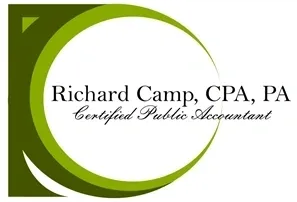How To Assess The Impact Of A Child’s Investment Income
When they’re old enough to understand the concepts, some children start investing in the markets. If you’re helping a child learn the risks and benefits of investments, be sure you learn about the tax impact first.
Potential danger
For the 2016 tax year, if a child’s interest, dividends and other unearned income total more than $2,100, part of that income is taxed based on the parent’s tax rate. This is a critical point because, as joint filers, many married couples’ tax rate is much higher than the rate at which the child would be taxed.
Generally, a child’s $1,050 standard deduction for unearned income eliminates liability on the first half of that $2,100. Then, unearned income between $1,050 and $2,100 is taxed at the child’s lower rate.
But it’s here that potential danger sets in. A child’s unearned income exceeding $2,100 may be taxed at the parent’s higher tax rate if the child is under age 19 or a full-time student age 19–23, but not if the child is over age 17 and has earned income exceeding half of his support. (Other stipulations may apply.)
Simplified approach
In many cases, parents take a simplified approach to their child’s investment income. They choose to include their son’s or daughter’s investment income on their own return rather than have him or her file a return of their own.
Basically, if a child’s interest and dividend income (including capital gains distributions) total more than $1,500 and less than $10,500, parents may make this election. But a variety of other requirements apply. For example, the unearned income in question must come from only interest and dividends.
Many lessons
Investing can teach kids about the time value of money, the importance of patience, and the rise and fall of business success. But it can also deliver a harsh lesson to parents who aren’t fully prepared for the tax impact. We can help you determine how your child’s investment activities apply to your specific situation.
Richard Camp, CPA, PA blogs and all other multimedia content is provided for informational and educational purposes only and should not be construed as financial tax, accounting, legal, consulting or any other type of advice regarding any specific facts and circumstances, nor should they be construed as advertisements for financial services. Because accounting standards, tax law, and technologies are constantly changing, content in this blog could contain outdated information.
IRS CIRCULAR 230 NOTICE: To ensure compliance with requirements imposed by the IRS, we inform you that any U.S. tax advice contained in this website (or in any attachment) is not intended or written to be used, and cannot be used, for the purpose of (i) avoiding penalties under the Internal Revenue Code or (ii) promoting, marketing or recommending to another party any transaction or matter addressed in this website (or in any attachment).
Richard Camp, CPA, PA blogs and all other multimedia content is provided for informational and educational purposes only and should not be construed as financial tax, accounting, legal, consulting or any other type of advice regarding any specific facts and circumstances, nor should they be construed as advertisements for financial services. Because accounting standards, tax law, and technologies are constantly changing, content in this blog could contain outdated information.
IRS CIRCULAR 230 NOTICE: To ensure compliance with requirements imposed by the IRS, we inform you that any U.S. tax advice contained in this website (or in any attachment) is not intended or written to be used, and cannot be used, for the purpose of (i) avoiding penalties under the Internal Revenue Code or (ii) promoting, marketing or recommending to another party any transaction or matter addressed in this website (or in any attachment).
Richard Camp, CPA, PA blogs and all other multimedia content is provided for informational and educational purposes only and should not be construed as financial tax, accounting, legal, consulting or any other type of advice regarding any specific facts and circumstances, nor should they be construed as advertisements for financial services. Because accounting standards, tax law, and technologies are constantly changing, content in this blog could contain outdated information.
IRS CIRCULAR 230 NOTICE: To ensure compliance with requirements imposed by the IRS, we inform you that any U.S. tax advice contained in this website (or in any attachment) is not intended or written to be used, and cannot be used, for the purpose of (i) avoiding penalties under the Internal Revenue Code or (ii) promoting, marketing or recommending to another party any transaction or matter addressed in this website (or in any attachment).
